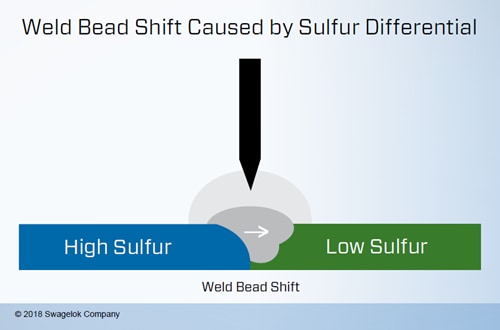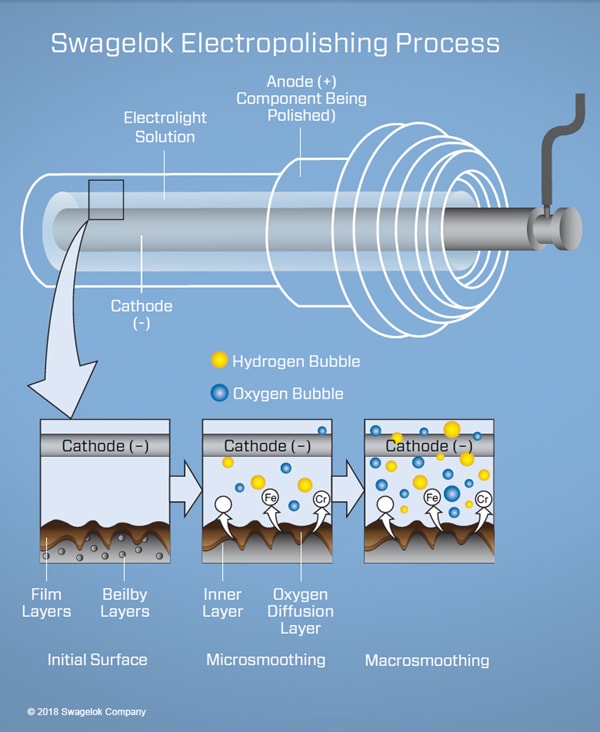Swagelok for Ultrahigh-Purity Applications
Do you work in the Semiconductor industry? Do you work with UHP applications where corrosive gases, extreme temperatures, and precision are critical process variables? In this article, we will explore how Swagelok specifically supports your requirements.
QUALITY STARTS WITH RAW MATERIAL
Much of the stainless steel offered in the open market is made with lesser quantities of expensive elements, including nickel and chromium. Swagelok's specification for chromium and nickel content in our stainless steel is at the high end of the range specified by ASTM standards, to promote superior corrosion resistance.
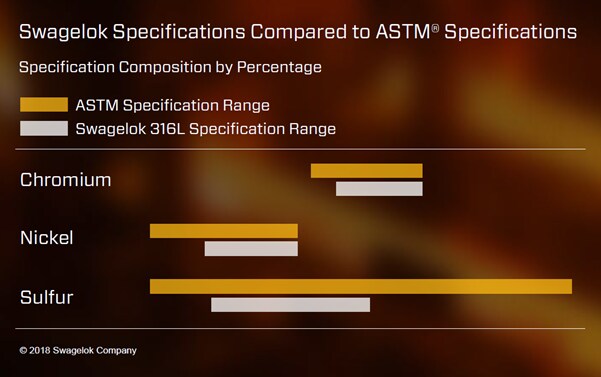
Above: Swagelok’s stainless steel tolerances for chromium and nickel are at the high end of the range specified by ASTM standards to maximize corrosion resistance. Learn More...
A KEY TO CONSISTENT WELDABILITY
Swagelok's specification for sulfur content has a tighter tolerance than the tolerance specified by ASTM. This results in more consistent weldability and machinability compared to other brands with broader tolerances.
Welding components made with differing sulfur levels will yield poor weld results. The sulfur content differential creates a weld bead shift which compromises the quality of the weld. A good weld bead profile, with full penetration to the ID of the weld joint, is an essential requirement for integrity in high-purity applications.
Above: Swagelok’s range for sulfur content in stainless steel tubing and components is controlled to avoid weld bead shift.
ELECTROPOLISHING AND PASSIVATION
Swagelok designs specialty fixtures and specific part parameters to ensure optimal electropolishing and passivation.Electropolishing is superior to mechanical polishing for semiconductor applications, since no abrasives are left behind, as is the case with mechanical polishing. Corrosion resistance is improved as a result of an enhanced chrome-to-iron ratio on the treated surface. Additionally, this process results in a smoother wetted surface and reduced wetted surface area, which improves dry-down and system purge times.
Passivation uses an acid bath to further enhance the material’s corrosion resistance by creating an inert passive layer that protects against damage from external elements.
CORROSION RESISTANCE QUALITY CONTROL
Swagelok has pioneered with Semiconductor Equipment and Materials International (SEMI) on the use of the Critical Pitting Temperature (CPT) test for determining corrosion resistance. SEMI has adopted the ASTM® G150 Standard Test Method for Electrochemical Critical Pitting Temperature Testing of Stainless Steels in the SEMI F77 standard, as an alternative to traditional surface analysis. The CPT test eliminates inconsistent results of surface testing caused by possible variations among labs. And, CPT can be performed as part of our in-line process control, vs. sending the parts offsite for evaluation.
Learn More About
|
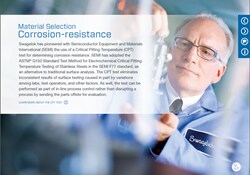 |
UHP CLEANING AND PACKAGING
Various contaminants, such as machining oils/coolants, finishing media, and electropolishing electrolytes, can compromise purity if not thoroughly cleaned. Swagelok is the author of process specifications that encompass industry leading requirements for performance and cleaning of components used in UHP manufacturing:
SC-01 Ultrahigh-Purity Process Specification specifies guidelines for surface finish and materials of construction to help our products resist impurities and corrosion, resulting in less likelihood of contamination in semiconductor manufacturing.
SC-11 Special Cleaning and Packaging Specification specifies cleaning and packaging requirements for wetted system components that exceed standard cleaning and packaging requirements. This specification helps to ensure that no lubricants or particles enter the wetted stream or other critical paths in semiconductor manufacturing.
SC-10 Standard Cleaning and Packaging Specification defines the cleaning, lubrication, assembly, and packaging requirements for standard products and describes the practices used to meet these requirements.
FREE RESOURCES
Would you like to learn more? Explore these free resources.
Download the FreeSwagelok for Ultrahigh-Purity Digital Guide |
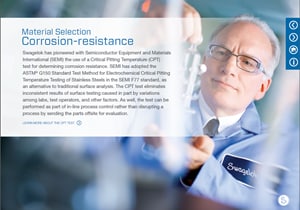 |

